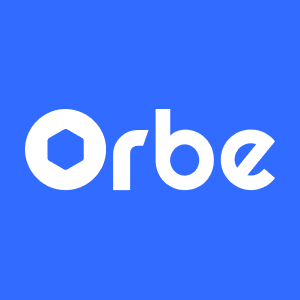To build a forceful brand, businesses are always in search of expanding their reach, especially if we consider brand stretch vs brand extension. The ways of conducting this include brand stretch vs brand extension. Brand stretch is a concept where a company takes its current brand into new products that are outside the initial category. Conversely, brand extension simply means that a firm uses its already-known name to introduce related novel commodities.
It is important to differentiate between brand stretch vs brand extension, as it helps in developing better marketing strategies. Furniture organizations, for instance, can benefit from these concepts through the addition of other products while remaining highly branded. While a brand determines which of the approaches is right to use at each given time, confusion will be eliminated, helping improve customer trust and making it easy to venture into untapped avenues.
Here is a more detailed blog post on brand extension as compared to brand stretching. It also provides real-world cases on the extension of brands. Moreover, it discusses the various ways in which furniture companies can use these tactics in their promotional campaigns. Brands can benefit from learning the two methods of brand extension, especially if they are either new in the market or already entrenched.
Defining Brand Stretch
What is Brand Stretch?
If we compare brand stretch vs brand extension, brand stretch implies the use of the same brand name to introduce new products under an entirely different category. For instance, a furniture company may decide to sell home decor items or even electronics, which is meant to help such brand take advantage of its high standing profile so as to achieve success in a different line of business.
Examples of Brand Stretching
Looking at examples makes it easier to understand what it means to stretch a brand rather than extend it. The IKEA brand is a perfect example of brand stretch because it is involved in several products.
Another example is Muji, which initially only offered furniture and other accessories for the home before branching out into clothing and personal hygiene products. This demonstrates how effectively brand stretching can be done.
Benefits and Risks of Brand Stretching
Comparing the brand extension vs brand stretching, the company could use brand stretching for its growth whereas brand extension has its risks too.
Benefits:
- More people recognize your brand: There is a wider recognition of your brand when you are selling new products that helps you reach to a lot of people.
- Customer loyalty: In case customers already love your products people might purchase them
- Business growth: Moving into different geographical locations can lead to increased revenue and growth in firms.
Risks:
- Confusing customers: If your new products are too different, people may fail to understand your brand.
- Harming your brand’s image: It could damage the reputation of your brand if the new products are not successful.
- High costs: Creating a new product line may involve high expenses.

Understanding Brand Extension
What is Brand Extension?
Brand stretch and brand expansion are not the same things. In the latter case, new items that are similar to those that are currently on the market are introduced under a company’s brand name. A case in point is where a furniture manufacturer starts selling cushions and/or rugs because they are a perfect match for furniture.
Examples of Successful Brand Extensions
Apple offers a good example of brand extension. First they produced computers, then expanded to manufacture phones and tablets. Nike, a brand that began with shoes, has extended its product line to include clothing and sports gear. These new products are complementary to their initial offerings.
Benefits and Risks of Brand Extension
Benefits:
- Makes the brand stronger: Sometimes, products can be more appealing to customers when they offer them together.
- Attracts loyal customers: For customers already in love with some of your goods, chances are they will also like your new arrivals.
- Lessens costs: The production costs will be lower for items that are not very different from those existing.
Risks:
- Limited growth: Customers would not be attracted to many new customers as new products are indistinguishable.
- Brand confusion: Failure of a new product of yours may confound the customers about your brand.
- Reputation risk: If the new product doesn’t succeed, it will affect your other products negatively.
Key Differences between Brand Stretch vs Brand Extension
Comparing Brand Stretch vs Brand Extension
In brand stretch vs brand extension, brand stretch means moving into completely new product areas, while brand extension means remaining close to the products that a company already sells. Brand stretch can be shown as a furniture company selling electronics, whereas brand extension suggests a furniture company selling cushions or lamps that complement its furniture.
When to Use Each Strategy
A company’s entry into a new market is the aim of brand extend. If a brand is judged to be sufficiently strong, the marketers can try something quite different. Brand extension comes into play when a company wants to introduce products that complement the existing ones. It’s a safer idea as the clients are already conversant with and trust the brand.
Impact on Brand and Customers
Both strategies influence how people perceive a brand. Stretching the brand can result in client’s confusion if the new product differs too much. If it works though, it can strengthen the brand. Conversely, launching new products may be considered easier under brand extensions because customers already rely on the brand. However, with brand stretch, growth may not be as much.
Conclusion
Growing a brand involves both brand stretch vs brand extension. Brand stretch means moving into completely new product categories; brand extension means adding related products to the current line-up. Therefore, any office furniture trader wishing to increase their market share should learn the distinction between these two strategies.
Approving or refusing on the brand stretch vs brand extension subject is likely depending on the enterprise’s objectives. If successful, it offers high rewards even though it might come with higher risks at times. Brand extension, on the other hand, is more secure because it keeps products within existing categories offered by one’s own brand name, which makes it less likely to offer higher returns.
At the conclusion of the day, what is important is that companies should weigh their branding plan so carefully. Entering new markets or introducing additional related products can only embolden the brand even further by attracting a larger customer base. The most essential things regarding business development are prudent planning and studying the niche.
FAQ:
What is the difference between a brand line extension and a brand extension?
In a different class of products, augmenting the brand’s assortment draws from an already existing enough name of a certain brand in the market. However, product lines that differ from each other belong to what we call brand line extension; for instance, additional sizes, colors, or characteristics may be incorporated into an already existing good.
What does extending a brand entail?
An established brand name is used to initiate new goods or services in either the usual or different groupings; extending a brand includes strategies based on customers’ minds with its identity trying to maximize market share.
What makes co-branding and brand extension different from one another?
Two or more brands collaborate in creating a product having benefits that significantly impact both parties through co-branding. However, brand extension involves using one’s brand to launch new products in different sectors or classes.
Which example of brand expansion works best?
IPhone Marking Apple’s brand extension into a successful milestone is such an example of effective brand expansion. Apple changed the way it conducted business and had an impact on other players in the industry when it entered the mobile phone industry by using its reputation.
Which drawbacks come with brand extension?
If a brand extension does not align with its values, it risks diluting the core brand, creating confusion among customers, or damaging credibility. Unsuccessful extensions inevitably lead to the erosion of customer trust and may have adverse effects on the general image of the brand as well.






